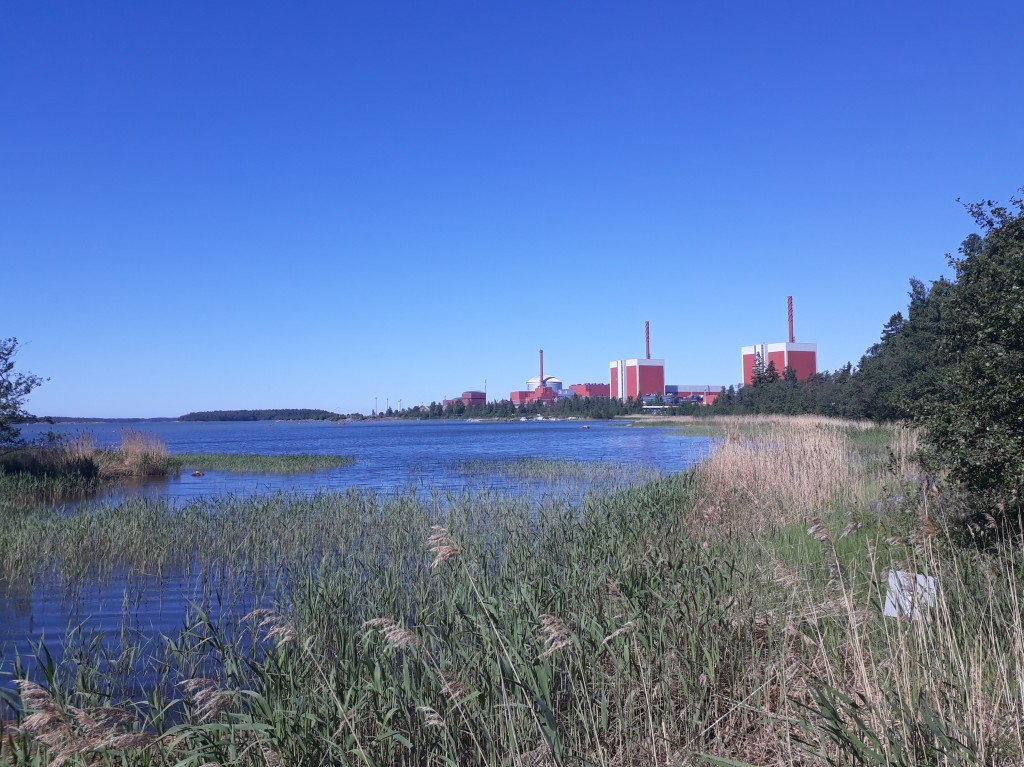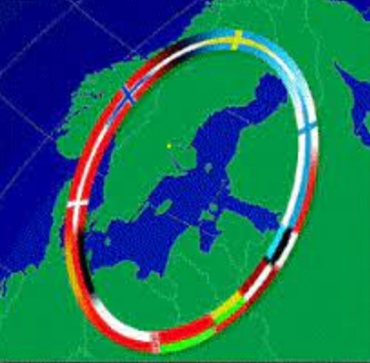The Nuclear Baltic: A Keynote Lecture
There was a time when virtually all my academic activities gravitated around the Baltic Sea. For a number of years, I travelled along its coasts, attempted to learn its languages and read everything I could find about its history. I spent a year and a half in Greifswald in Pomerania, where I wrote my master’s thesis, then a year in Tallinn and Tartu in Estonia, where I did research for my PhD thesis. And of course I spent numerous summers in Kvarnåkershamn on Gotland, where we have a summer house. In 2007 I wrapped up my experiences of the Baltic Sea world in a travelogue, “Östersjövägar”, which let the past confront the present and the personal meet the professional.
Since then my geographical focus has been less distinct, as I have become engaged with wider European and global issues. The NUCLEARWATERS project, however, which aims to rewrite the global history of nuclear energy through the lens of water, has allowed me to partly return to the Baltic Sea: one of the six case studies addresses the “Nuclear Baltic”. Earlier this month I had the chance to present tentative results of it at this year’s Baltic Connections conference in Jyväskylä, Finland. I had been invited to give one of the keynote lectures, and decided to make use of the opportunity to discuss the ongoing nuclear-historical research that my colleagues at KTH and I are currently doing with a multi-disciplinary crowd of scholars from Finland, Scandinavia, the Baltics and beyond.
The notion of the “Nuclear Baltic” reflects a desire to move away from the nationally oriented nuclear histories that so far has dominated the literature and, instead, take the Baltic Sea region in its entirety as the point of departure for analysing nuclear’s past and present. There is good reason to do so, especially if we view the history of nuclear energy through the lens of water. Finland, Sweden, the Soviet Union and East Germany all built nuclear power plants on one or the other Baltic coast, making use of the same brackish water for the plants’ cooling needs. Denmark also planned to erect a Baltic nuclear plant, but eventually opted not to go nuclear at all. Poland started to built a large NPP near the Baltic coast, although in this case the nuclear builders, for reasons still not entirely clear to me, preferred to use a lake rather than the Baltic itself for cooling. Nuclear engineers tamed the Baltic Sea, adapting the coastscape to their specific needs, while the sea itself occasionally also “revolted”, causing problems for the nuclear plants. Nuclear builders, moreover, interacted intensely with fishing, navigational and recreation activities. The plants were usually built in places that were popular spots for bathing, swimming, hiking and sailing.

After 1989, the nuclear power plants that had been erected on different Baltic shores started to interact with each other in very interesting ways. The collapse of communism on the Baltic’s eastern shores made it much easier for actors on the Baltic’s western shores to access information about nuclear developments in the east. This partly generated new fears in the West about the dangers of Soviet-designed NPPs. Finland, for example, was increasingly worried about the Chernobyl-type reactors at Sosnovy Bor. Denmark, for its part, had traditionally been extremely critical of the Swedish Barsebäck NPP, but towards the late 1980s this was more and more accompanied by fears of the Greifswald NPP as well. Sweden, too, worried both about Greifswald but even more about Ignalina and its Chernobyl-type reactors.
But there were also new hopes. The collapse of communism and the end of the Cold War opened up for new forms of hands-on technical cooperation between East and West. Nordic and West German nuclear engineers became very engaged in improving the safety of Soviet-designed plants. Moreover, the closure of the closure of the ex-GDR’s Greifswald NPP (which I have written a book about long ago) enabled engineers to take a close look at the decommissioned reactor vessels and examine safety problems related to things like pressure vessel embrittlement in Soviet-type reactors. These studies proved very useful especially for the Loviisa NPP in Finland, which had two very similar pressure vessels. The Loviisa reactors had for some time experienced embrittlement problems, and the study of the decommissioned Greifswald pressure vessels led engineers to devise effective engineering solutions to that problem. There was a similar interaction between Finland and Poland. The Poles had abandoned their work on the Zarnowiec NPP after the Chernobyl disaster. The Finns then asked the Poles if they could purchase one of the Polish reactor vessels, along with various other equipment, with the idea of using them for training purposes in Finland. These are fascinating examples of transnational dynamics in the post-Cold War nuclear Baltic.
At another level, the end of the Cold War ushered in a new era of transnational cooperation in the field of electricity system-building. A mix of political and technological visionaries suggested that an integrated electricity grid and a common electricity market in the Baltic Sea region could serve as a powerful example of Baltic Sea cooperation more generally and, following a Kantian and Saint-Simonian philosophical tradition, contribute to political stability, international understanding and peace. This became the starting point a project that was popularly referred to as the “Baltic Ring”. Actors envisioned new subsea electrical connections between Finland and Estonia, between Lithuania and Poland, between Lithuania and Sweden, between Poland and Sweden, and so on – connections that would serve to unite the Baltic Sea both materially and symbolically.

There was at least one problem with these new proposed interconnection projects: there were radically different interpretations about the actual purpose of the subsea cables. To understand this we should first observe that, for example, the Ignalina NPP in Lithuania had traditionally served electricity needs not only of Lithuania itself, but also of neighbouring regions in the ex-Soviet realm, especially Russia and Belarus. In the 1990s, then, Lithuania’s nuclear exports to these countries was expected to be phased out. In this situation, the Lithuanians hoped to compensate for its loss of export revenues by shifting its nuclear electricity exports to the Nordic region and Poland. Hence from a Lithuanian perspective the purpose of the “Baltic Ring” was to enable a restructuring of Lithuanian nuclear electricity exports. This vision contrasted starkly with Nordic and in particular Swedish visions. The Swedes regarded a potential new electricity connection between Lithuania and Sweden as a way for Sweden to strengthen the Lithuanian electricity system and, by extension, make it possible for the Lithuanians to close down their dangerous nuclear power plant. These very different interpretations was a key reason for the very long delay of the proposed link between Sweden and the Baltics; it was finally implemented only in 2015 – nearly a quarter of century after the collapse of the Soviet Union.
In the case of Poland, the decision to abandon the Zarnowiec NPP was detrimental to Polish electric grid stability. It was clear to electricity system builders that a new source of electric power was direly needed in the northern part of the country. The post-nuclear solution, however, was not to build a coal power plant or a gas power plant in northern Poland. Instead, Poland and Sweden agreed on laying down a subsea electricity cable under the Baltic Sea, through which Poland was given access to Swedish nuclear electricity. The cable, which was eventually inaugurated in 2000, landed in the port of Ustka on the Pomeranian coast, not far from the ruins of Zarnowiec. So all in all, when we read about the electricity cables that now criss-cross the bottom of the Baltic Sea, we should view them as components in a wider transnational struggle for and against nuclear energy in the Baltic Sea region.
A final chapter in the Baltic’s nuclear history has to do with how the Baltic Sea itself has gradually emerged as a threat to nuclear safety. The environmental situation in the Baltic Sea has been deteriorating for decades, in ways that the nuclear builders of the 1960s and 1970s could hardly have imagined. Since the 1980s, in particular, the Baltic Sea has seen enormous problems with eutrophication and algal blooms, much highlighted in the general media. In addition, the Soviet Union and then Russia has increased its oil exports enormously, and much of this oil is shipped through the Baltic on its way to foreign markets. These developments now pose a major threat to nuclear safety, or so nuclear engineers and power plant operators think. More precisely, what they fear is that the supply of cooling water might be compromised or disrupted for one or the other reason.
The most severely affected nuclear pant in this respect – so far! – appears to be the Finnish Loviisa facility, situated as it is in a vulnerable spot on the Gulf of Finland, where Russian oil tankers pass by and which is also susceptible to algal blooms. In response to this, the nuclear operator, Fortum, in 2013 announced a new investment program, centering on the construction of special cooling towers to “improve safety in extreme conditions when seawater becomes unavailable for cooling, such as an oil catastrophe in the Gulf of Finland, or an exceptional natural phenomenon such as excessive algae growth.” In this way the Baltic Sea, which historically seemed to offer a perfect source of cooling water, in a way that was seen to guarantee nuclear safety, is nowadays turning into a threat to nuclear safety, and nuclear engineers are now very busy devising technical solutions to cope with these perceived dangers. It remains to be seen how the marine environmental situation in the Baltic Sea continues to interact with nuclear developments. In any case, the history of the Nuclear Baltic is still very much a history in the making.